With the full 2018 line up of Safari Ltd. on shelves for more than a month it’s easy to forget the lesser popular releases of 2017. So to remedy this, here’s the review of Safari’s Quetzalcoatlus for 2017.
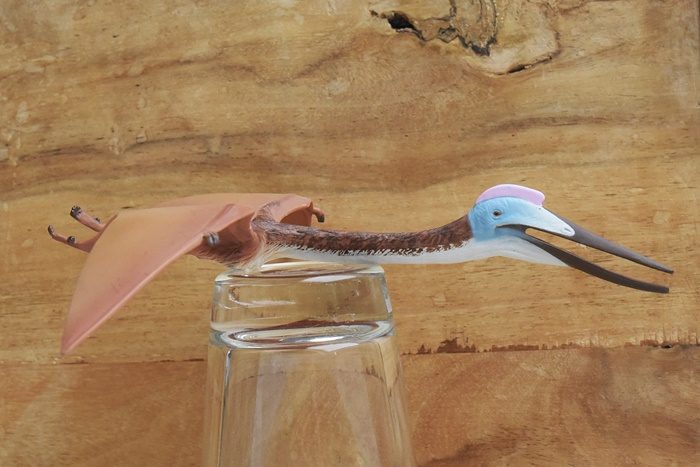
Remains of what we accept as Quetzalcoatlus were discovered 1971 in North American Big Bend National Park by Douglas A. Lawson and assigned to a gigantic pterosaur. There’s some discussion about the true identity of Quetzalcoatlus, not only because fossil remains may be assigned on the base of insufficient data, but also because the relation to other species as Hatzegopteryx is not understood sufficiently. If you want to delve deeper into this topic, I recommend viewing the according wikipedia article or – highly recommended – get Mark Witton’s book on pterosaurs.
For all the general community currently accepts, Quetzalcoatlus was as nothing we will ever see in nature. Its wing span may have exceeded 10 metres, it stood 3 metres high at the shoulder and its skull alone measured 3 metres. This image may give an impression on its true gigantism. Despite this incredible size, the whole creature may have weighted just as much as a strongly build human.
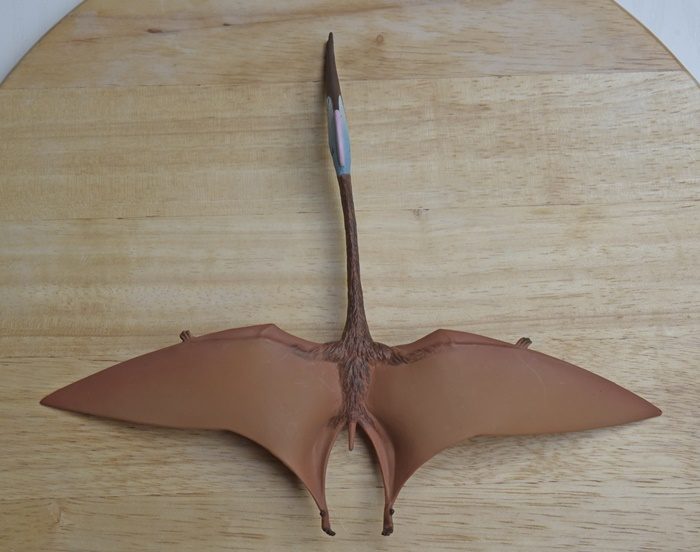
Safari’s Quetzalcoaltus wings span 21.5 cm, in this regard rendering the figure in a scale of 1:50 to 1:45. Total lenght from tip of the beak to the toes is 18.5 cm. The animal is shown in a gliding pose, all limbs and the neck stretched out to a max. Body and neck are covered in pycnofibers, where arms and legs are joined with the flight membranes, those hair like structures are missing. The basic color is an orange brown, the belly and underside of the neck are white, while the pycnofiber covered part of the body is brown. the beak is held in dark brown, the head strikes in pale blue with a pink crest.
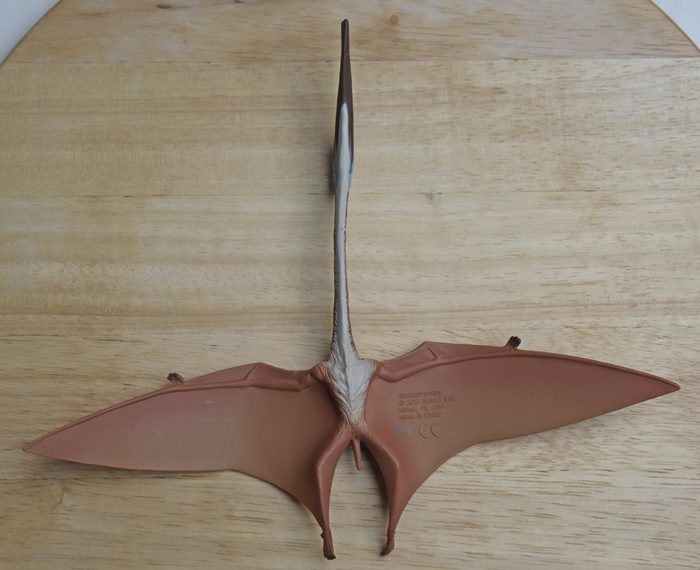
In terms of accuracy there’s not much to moan. The only true inaccuracy may be the pteroid, a special bone on pterosaurs that is often confused for a finger and helps stabilising the front of the wing by spanning the propatagium, the membrane spanning from the shoulder along the arm to the hand. In Safari’s Quetzalcoatlus the pteroid is pointed forward in an angle, giving the propatagium a significant edge while current agreement is, that it was orientated more toward the shoulder in a way that the propatagium would be straight.The crest of Quetzalcoatlus is only partially known, the crest in the figure is shown in several other reconstructions and future findings may render it right or wrong.Probably not an inaccuracy but rather some mistake in scultping or casting is the lower mandible. It is stronger than the upper mandible and pointing upwards towrds the tip. It looks rather weird and unfortunately I could not cure it permanently with the hot water. Maybe this is a result of some safety modifications on the figure as the beak would otherwise make a formidable dagger.
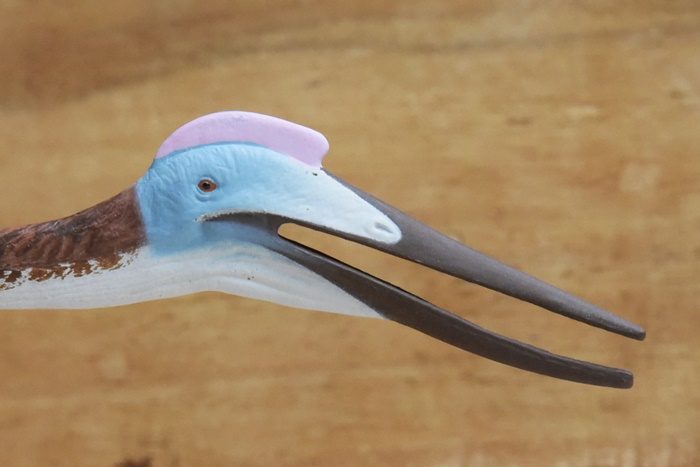
In terms of playability the figure is great. Toy pterosaurs need to be in a flying pose, that’s what I ever expected from a “flying dinosaur” and I guess that also is true for children today. However, this pose makes the figure hard to display for collectors. You can lay it flat on the ground but yeah, that’s rather unsatisfying, I hang mine from a shelf next to other dinosaur figures. Despite the somewhat garish colors on the head, the whole figure is not really outstanding but rather boring. On the other hand there’s not so much accurate, flying pterosaurs around that could help fill the “air space” in your collection. So to whom would I recommend this figure? Collectors with a heart for pterosaurs, completists (for sure) and children that want something different than a Rex or Trike in their prehistoric world.
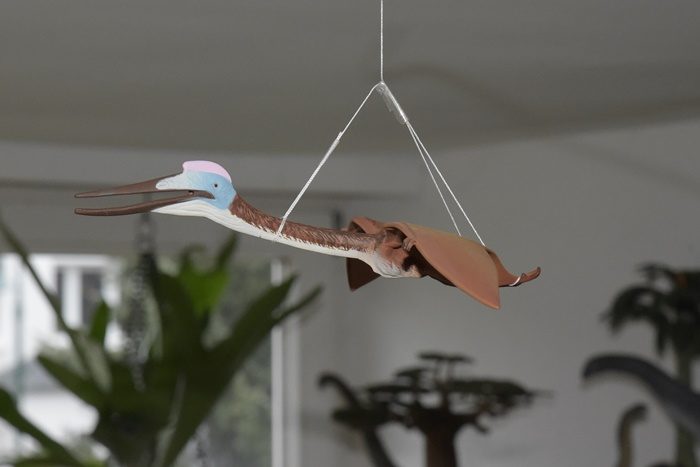
Widely available, if you can, support your local retailer.
Disclaimer: links to Ebay and Amazon on the DinoToyBlog are affiliate links, so we make a small commission if you use them. Thanks for supporting us!




ÁÁÁÁ a CollectA verzió sokkal izgamasabb,hamm Alamosaurus!
Flying poses might be what is expected of pterosaurs, but I would welcome a walking variant by Safari. I think THAT general pose really brings out the weirdness of this animal.
Nice review and pictures. I find the typical flying “gliding” pose a little boring, and the wings have no detail. They look like plastic wings which is unfortunate as the rest of it looks alright. Oh well.
You mention the scale, but don’t mention the species. I’m guessing you’re assuming this is Q. northropi, rather than the smaller Q. sp.?
Yes, you are correct, missed that. To be sure, Safari does not mention which species it should represent, but the scale given in the review would go for the bigger nothropi.
I don’t like how the wings are completely smooth; it’s a step down from the sculpting on previous Safari pterosaurs. I also would like to see them do a walking pterosaur for a change.
The figure is magnificent and outstanding in almost every aspect, the only defect I find is that it is too small a figure considering that it was one of the greatest pterosaurs of all time. I would have liked it to be made to a larger size.